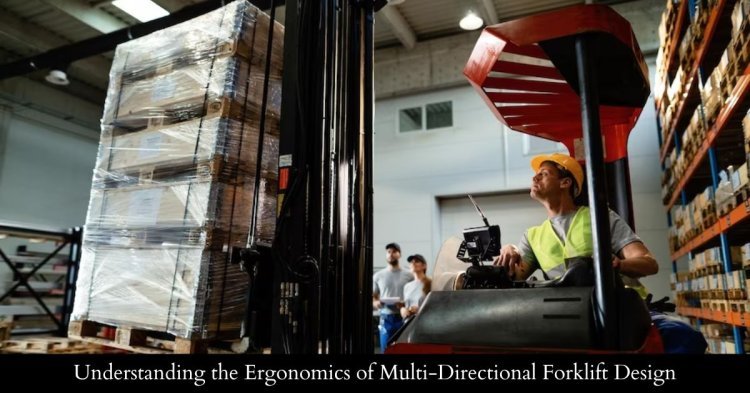Understanding the Ergonomics of Multi-Directional Forklift Design
Discover how the ergonomic design of multi-directional forklifts enhances operator comfort and safety, maximizing efficiency in material handling.

Introduction:
In the bustling world of material handling, efficiency and safety are paramount. When it comes to transporting long, heavy, and bulky items like pipes, traditional forklifts may not always suffice. This is where multi-directional forklift steps in, offering innovative solutions for handling such specialized loads. In this article, we delve into the ergonomic considerations behind multi-directional forklift design, particularly in the context of pipe handling equipment.
Understanding Multi-Directional Forklifts:
Multi-directional forklifts, also known as side loader forklift, are specially designed to maneuver in tight spaces and handle long or irregularly shaped loads with ease. Unlike traditional forklifts that move primarily in a forward-backward direction, multi-directional forklifts can travel sideways as well, making them ideal for navigating narrow aisles and confined spaces commonly found in warehouses and manufacturing facilities.
Ergonomic Features:
Operator Comfort: One of the key ergonomic considerations in multi-directional forklift design is operator comfort. These forklifts are equipped with ergonomic seating and adjustable controls to ensure that operators can work efficiently without experiencing discomfort or fatigue, even during extended shifts.
360-Degree Visibility: Another crucial aspect of multi-directional forklift ergonomics is providing operators with maximum visibility. Clear sightlines are essential for safely navigating tight spaces and avoiding collisions, especially when handling long and bulky loads like pipes. Advanced camera systems and strategically positioned mirrors enhance visibility, allowing operators to maneuver with confidence.
Intuitive Controls: Multi-directional forklifts are designed with intuitive controls that are easy to operate, even for less experienced users. This ergonomic feature minimizes the learning curve for operators and reduces the risk of errors or accidents, enhancing overall efficiency and safety in the workplace.
Load Handling Adaptability: Ergonomic design principles are also applied to the forklift's load handling capabilities. Multi-directional forklifts are equipped with versatile attachments and adjustable fork positions, allowing operators to securely grip and transport pipes of various sizes and shapes without the need for manual adjustments or additional equipment.
Applications in Pipe Handling Equipment:
Multi-directional forklifts play a crucial role in the efficient handling of pipes across a wide range of industries, including construction, plumbing, and manufacturing. Here are some specific applications where these forklifts excel:
Storage and Retrieval: Multi-directional forklifts are used to transport pipes to and from storage racks in warehouses and distribution centers. Their ability to maneuver in narrow aisles and tight spaces makes them well-suited for retrieving pipes stored vertically or horizontally, maximizing storage density and accessibility.
Loading and Unloading: When loading or unloading pipes onto trucks or flatbeds, multi-directional forklifts offer unparalleled versatility and precision. Operators can easily position the forklifts parallel to the loading dock or vehicle, ensuring efficient transfer of pipes with minimal manual handling or repositioning required.
Assembly Line Support: In manufacturing facilities, multi-directional forklifts play a crucial role in supplying pipes to assembly lines or transporting finished products to storage areas. Their agility and maneuverability enable seamless integration into production workflows, helping to optimize productivity and streamline operations.
Conclusion:
In conclusion, the ergonomic design of multi-directional forklifts plays a vital role in enhancing efficiency and safety, particularly in the handling of specialized loads such as pipes. By prioritizing operator comfort, visibility, intuitive controls, and load handling adaptability, these forklifts empower operators to work with confidence and precision in diverse industrial settings. Whether in warehouses, construction sites, or manufacturing facilities, multi-directional forklifts continue to revolutionize pipe handling equipment, driving productivity and reliability in material handling operations.
What's Your Reaction?











![Wireless Connectivity Software Market Size, Share | Statistics [2032]](https://handyclassified.com/uploads/images/202404/image_100x75_661f3be896033.jpg)



